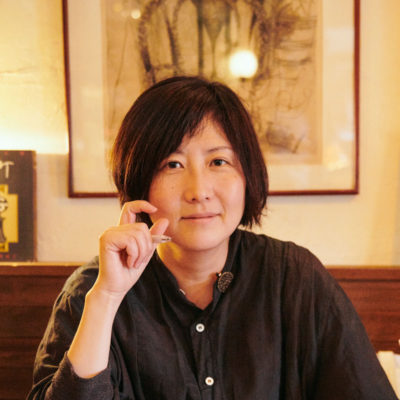We believe that for local communities, crafts are hidden treasure that will prove to have value far greater than ever before. How will work that is grounded in nature and the environment be transformed and lifted as culture?
There are people who are putting into practice new perspectives and methods. In this series, we go to see these people at work, and we consider how makers and the people who connect them to markets are discovering new value in crafts.
Page Index
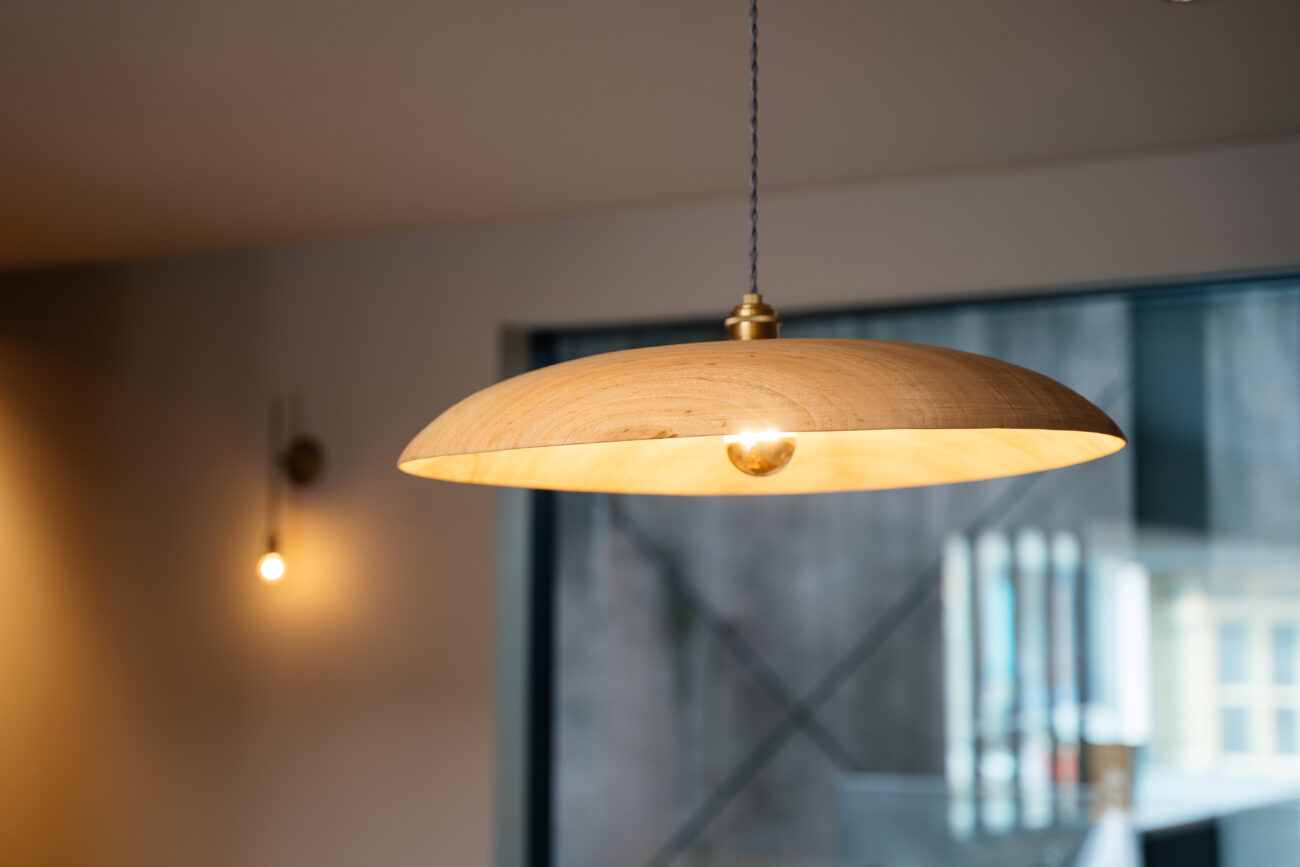
In the Inami district of Nanto, Toyama Prefecture, a center of woodcarving craft for over 600 years, I interviewed architect Yamakawa Tomotsugu. The Bed and Craft network that Yamakawa inaugurated has breathed new life into the community.
The Bed and Craft accommodation network, offering visitors a chance to interact with craftspeople, began with the Tategu-ya lodge, opened in 2016. The network has since expanded to 11 properties in all, including a reception facility and a restaurant. These initiatives have in turn attracted other businesses, among them a coffee roastery, a craft beer brewery, a bakery, an aroma distillery, and new accommodation facilities. After seven years, there are now 42 new businesses in Inami.
In a previous interview, Yamakawa described Inami as “that rare place where visitors can see handcrafts actually being made.” Inami, where one in forty residents is a woodcarver, relies on its culture to match craftspeople with new customers and add vitality to create a new community. The initiatives being advanced in Inami could be a harbinger of new growth in the realm of craft.
His Project → Treasured Woodworking Skills Flourish in Toyama’s Inami District
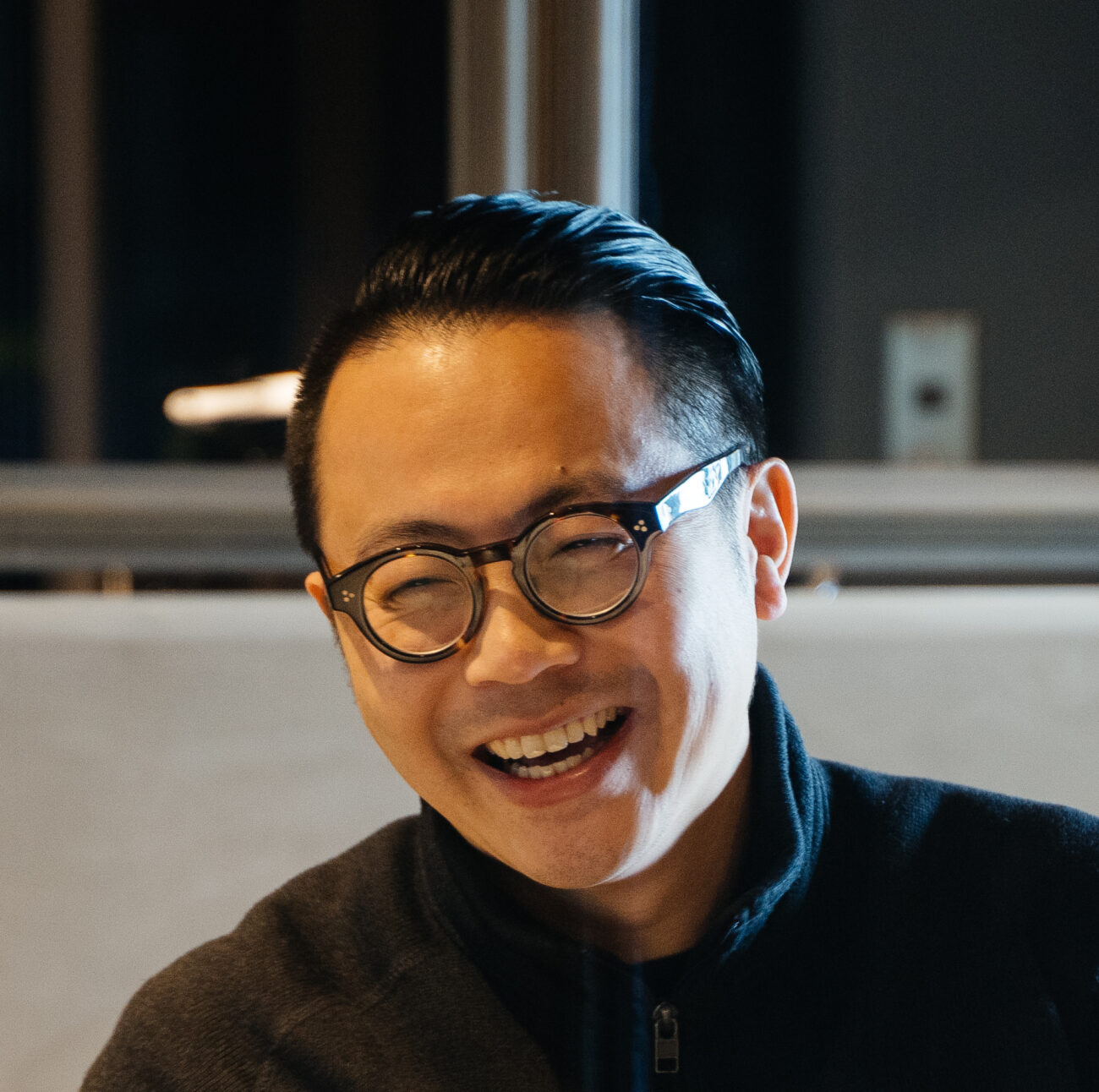
Yamakawa Tomotsugu
After studying in Canada, Toyama-born Yamakawa moved to Shanghai in 2009 and studied under Qingyun Ma at MADA s.p.a.m. Shanghai, where, as chief designer, he was involved in planning numerous public and commercial facilities. In 2011 he set up the Tomo Yamakawa Design studio in Shanghai. In 2017 he established the creative cooperative Corare Artisans Japan in Inami, Toyama, known as Japan’s premier woodcarving community. Corare Artisans Japan is a collective of creators working with artisans to create new value aiming to revive the tradition of artisans producing commissioned works.
Designers and Artisans Collaborate
Kai
After working in China as an architect, you returned to Japan but chose to settle in Inami rather than Tokyo. Apparently, you believe that architectural work in the big cities consists simply of designing structures that fit prefabricated components together, something that holds little interest for you.
Meanwhile, many artisans still live in Inami. You have said that it is a great place for getting involved in the handcraft process, because client and artisan collaborate, discussing the shape of an object and choosing the material to make it from. Do you still feel that way?
Yamakawa
I am even more convinced now that I made the right decision in coming to Inami.
What makes Inami so different is that no two items made here are identical. Take Niiyama Naohiro, (1) and his accessories made for eyewear components or Echizen lacquerware in Sabae, Fukui Prefecture, or Shiramizu Takahiro, (2) who sells goods made of Kurume ikat in Yame, Fukuoka Prefecture, who are both around my age. Niiyama, based in Fukui Prefecture, which is known for eyewear production and Echizen lacquerware, and Shiramizu, in Yame, Fukuoka Prefecture, where Kurume ikat has long been produced, create wonderful crafts, but they’re manufactured in fairly large quantities using molds or stencils. In Inami, on the other hand, everything is 100 percent made by hand, in small lots. It’s one-of-a-kind production.
Although everyone here is a woodcarver, they don’t all produce the same kinds of work. Some create figures of young women, others carve Buddhist statues, and still others work anonymously, carving elaborate ranma transom grids or awesome dragons.
There’s no predetermined format to follow, so it’s easy for artisans to collaborate with creators and designers from outside Inami and work on product development. The works are all made by hand too, and are of high quality. In other words, the ideas the creators and designers come up with take shape right away. In Tokyo and other large cities, people may have an idea for a particular object, but it’s difficult to find anyone in the vicinity who is capable of making it. Sometimes, products cannot be commercialized because it can cost one million yen to create a mold from which to make them. Digital manufacturing devices have been developed, but in Inami, a product can be made by hand, from scratch. That’s the overwhelming advantage that we have over other producing areas.
(1) Niiyama Naohiro works mainly to produce Echizen Sabae handcraft designs at design company Tsugi. “Renew” is a yearly event featuring local handcraft exhibitors offering tours of their studios.
(2) Shiramizu Takahiro sells monpe workwear made from Kurume ikat and other local handcrafts through regional trading company Unagi no Nedoko, based in Yame, Fukuoka Prefecture, and antenna shops elsewhere in the country.
Kai
So, designers or creators have much more creative freedom in Inami. Designers, creators, and artisans are also on a more equal footing, which leaves the door open to do interesting things. That’s likely to have quite an impact on the future of craft-producing areas.
Yamalawa
Right now, I’m thinking of launching a new brand, called Ippa, with handcraft designer Oji Masanori. We’re also thinking of the possibility of incorporating a system for young Inami artisans to receive commissions and perform work under this brand.
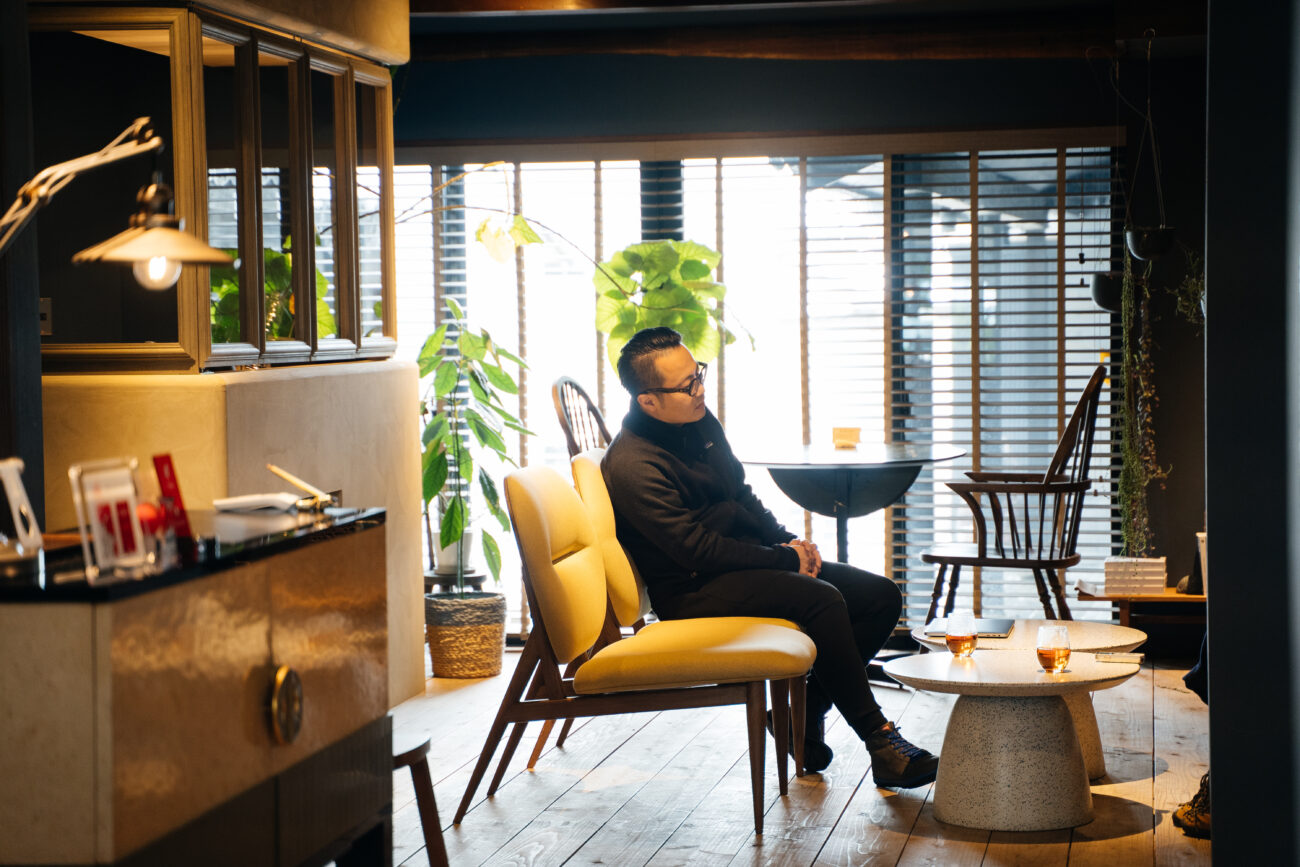
The Unseen Context Behind the Appeal of Localized Culture
Kai
Meanwhile, there’s always the issue of the difference between goods produced via 3D printers and handcrafts with local flavor. You’ve said before that if it’s simply a matter of how well carved an object is, artisans cannot compete against 3D printers. Where does the difference lie?
Yamakawa
The shift to digital is undoubtedly accelerating, and it’s not my intention to deny that. In the future, however, I think the divide between digital-technology production and production by hand will become increasingly pronounced, and there will always be objects that absolutely must be made by hand.
Those objects are ones that embody culture, local qualities, and the context underlying them.
Although digital may be fine for making copies or giving physical shape to data, context will become very important—for example, where an object is placed or how a decoration is displayed.
For example, if you said you were going to create carvings for Izumo Taisha Shrine using 3D, the local community would be up in arms. That’s because the context—where did the wood for the carvings come from? Who carved them? Is the skill genuine? —are very important.
If that’s not the case, why were more and more people across the world traveling prior to the COVID-19 pandemic and now again as it’s passing away? Why do people make the effort to actually go places, when they can obtain all the information they need via the internet or use ChatGPT to answer all their questions? It’s because of the basic human desire to see for oneself, to have direct contact with the story behind objects that are genuine.
I believe that people go places precisely because information has become so easy to obtain.
Kai
By that, I think you mean that people are not simply looking for something beautiful or finely made. People ascribe value to the unseen, to the background context that makes an object special or worthwhile. People are also interested in the unknown, the not-well-understood; their curiosity is aroused by something because they are unsure of what it is.
When I spoke with Ogomori Chiharu, who operates the Takarajima Senkou dyeing studio in Kurume, Fukuoka Prefecture, she commented that consumers are getting increasingly closer to the production source, for example, buying vegetables or foodstuffs from farm stands. The same goes for handwork, as customers want to see clothing being dyed or made or even try their hands at doing so. Ōgomori described that as seeing or doing things in their “raw” state. Through my reporting, I’ve also gotten the impression that more people are beginning to feel that way.
Users may be attempting to discern the essence of a product by going to the source of production to see where and how it’s made and what it’s made of.

Yamakawa
I suppose so. Meanwhile, brands and status are also losing their cachet. In earlier days, people believed that merely receiving an item in a shopping bag from an upscale department store like Mitsukoshi, or yokan, a confection made from sweet bean paste, from Toraya, maker of high-quality sweets, was a guarantee of quality. Information was not as readily available to individuals previously, and the “seal of quality” thus afforded was satisfying to both giver and recipient. Nowadays, even if an item is delivered in Mitsukoshi wrapping paper, interest has shifted toward the item itself. I believe people have become curious about whether an object really is rooted in where it came from and whether it was made by someone with genuine talent.
Kai
In the past, people relied on brand names or department store buyers to guarantee quality. But now, everyone tries to determine that for themselves, because they have access to information. As a result, people can be truer to their own tastes and “value” becomes more differentiated—and more genuine. What is going on in Inami now may be, in a certain sense, in tune with the times, shifting back to the old tradition of craftspeople who served the tastes of a specific customer.
Yamakawa
It’s a very good thing that everyone can be the arbiter of their own taste; this also represents an opportunity for Inami. It’s certainly true that things have come full circle and that Inami may be spearheading a new trend.
As far as using digital technology goes, photographer Ohki Ken has an interesting idea for a “virtual Inami.” Carvings are three-dimensional, which makes it difficult for two-dimensional photos to communicate their energy. He’s working to build a metaverse where Inami woodcarving can be shown in three dimensions.
This metaverse has a gallery-like function. If three thousand people came here, it would be pandemonium. But in virtual space, thousands of people can view the carvings simultaneously. So, depending on how the technology is used, presenting in virtual mode can be a viable alternative.
Every Inami woodcarving is unique. Inami’s artisans have created a variety of pieces up until now, but since they’re one-of-a-kind, they disappear from view once purchased. In that sense, a virtual gallery is a good way of recording what has been made.

Breathing New Life into Handcraft Culture
Kai
While Inami is not an officially designated Important Preservation District for Groups of Traditional Buildings, I was surprised at how well the old townscape has been preserved. Woodcarving culture here is obviously alive and well, thanks to local residents’ cherishing of their heritage and efforts to preserve it, rather than because the government asks them to do so.
Yamakawa
Inami was never a sightseeing destination. It’s a town of artisans, of industry. You may have noticed that homes here have windows facing the main street. That wasn’t for the purpose of waiting on customers or selling goods; it was to provide good light for artisans to work by. Those artisans produced ranma transoms, interior fittings, and other carved items for use in old houses, so they came to gear their output to match traditional structures. That’s ultimately helping make Inami attractive for visitors.
Kai
The lodgings and shops you and your colleagues have created here are grounded in Inami’s history, culture, and way of life; they blend well with the town as a whole. Rather than plopping down structures that are out of context, you have respected local culture as much as possible to extend the life of Inami’s traditional skills.
It’s an attractive combination of the area’s cultural capital of history and handcraft skills and of an adventurous spirit embracing the new.
Yamakawa
Old houses have been preserved everywhere in the country, but most of them are the former dwellings of wealthy merchants or farmers. On the other hand, many of the akiya or “empty houses” here are just ordinary private homes that we transformed into accommodations. The only way to solve the akiya issue—the growing number of unoccupied older structures—is to repurpose such buildings as we have done.
We breathe new life into assets that local residents weren’t really aware had value. Behind our project is our aim to reacquaint them with that value.

Kai
Renovating six properties must be expensive. Are you paying for that yourself?
Yamakawa
Some people may believe that I’m wealthy, but the only property I operate directly is Tategu-ya. All the others are operated under an ownership system, whereby the owners buy the land and the building and pay for renovations. We operate the properties on their behalf.
The properties are not rented, as sales are ploughed back into the buildings. We wanted everyone to be on the same footing, sharing in both the good times and bad.
It’s quite common for major hotels to be owned by one entity and operated by another. For example, Tokyo’s Ritz-Carlton Hotel is located in a building owned by the Mitsui Fudosan real estate company, but this kind of arrangement is probably rare for kominka folk dwellings.
Kai
Who are the buildings’ owners, and what are the advantages of the system for them?
Yamakawa
One of the owners is a friend of mine from Shanghai. He’s a trader who would like to own a holiday home in Japan, but who can probably use it only ten days a year. He owns the building and receives a dividend in the form of free accommodation when he’s in Japan. The rest of the year, we handle cleaning and maintenance. It’s a concept similar to the “Not A Hotel” time-share idea.
Another owner is a company based in Okinawa called Okinawa Tourist Service. It’s principally a travel agency that also owns accommodation facilities. It can create its own tours and has exclusive access to Bed and Craft, which generates synergy. Its investment in real estate is not going to bring huge returns, but the company joined our project because it wants to help revitalize regional communities.
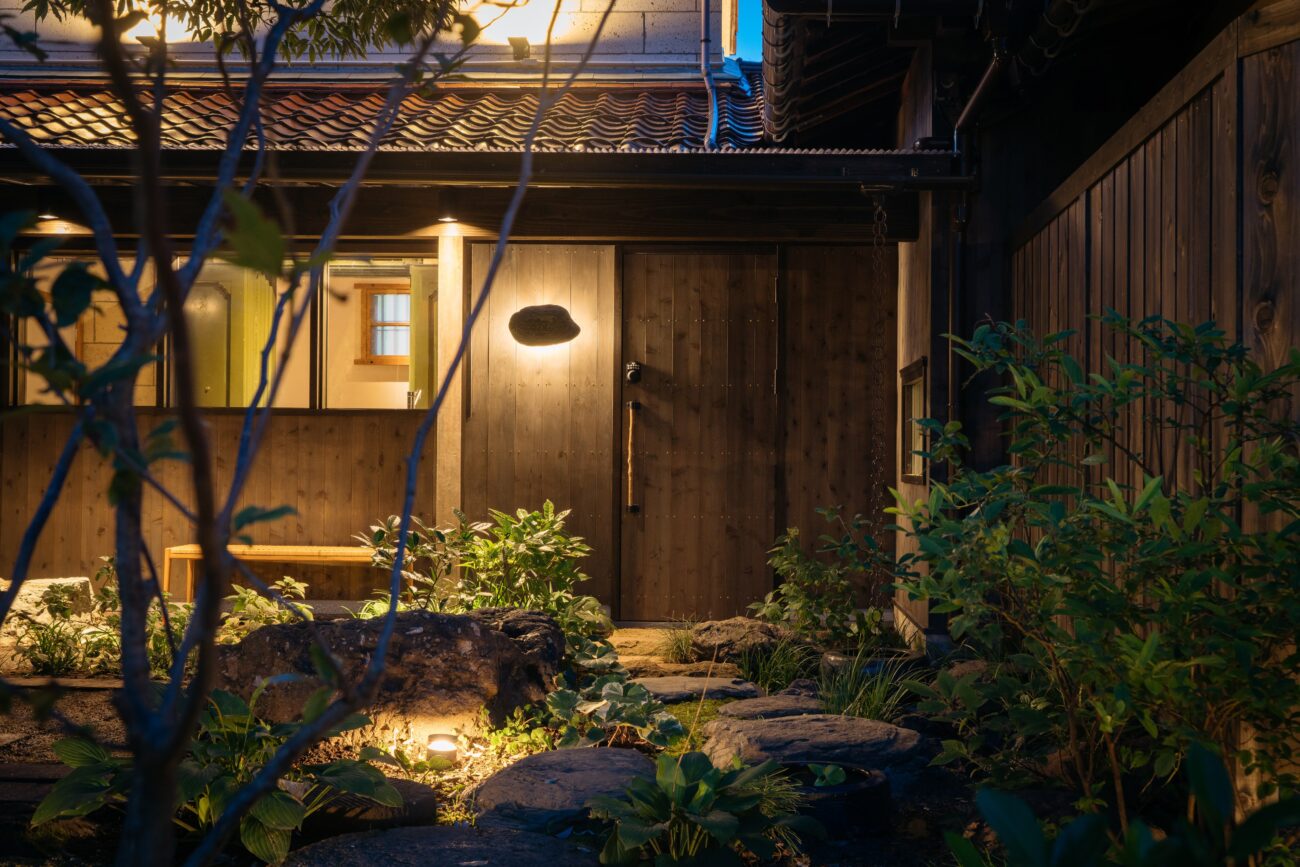

New Businesses Spring Up
Kai
Although Inami previously had just one accommodation facility, the town has obviously succeeded in attracting owners. They’re drawn by the local history and culture. With Zuisenji Temple as its symbol, they can see that Inami’s woodcarving culture is alive and vigorous.
Yamakawa
At first, people looked askance when I said I was going to open lodgings here. Tategu-ya opened in 2016, and after a year’s operation, we had welcomed one thousand overnight guests. Over 60 percent were non-Japanese, and of that figure, 64 percent were from Europe and North America. (See here for the story of how Bed and Craft came to be.)
This kind of highly local accommodation indirectly boosts local income too. If you build a large hotel belonging to a chain, both the builders and the managers will come from Tokyo. With Bed and Craft, local builders handle renovations, and staff are local people. Even a small property with only six rooms can bring over seven times the revenue to the local economy compared to a major hotel.
Kai
Rather than struggling to keep shops or other establishments open, it’s a question of choosing what to close. Keeping the income in the community ends up benefitting you too, isn’t that so?
It’s the same idea as encouraging visitors to move around the town and patronize local businesses rather than creating a closed ecosystem within a hotel. When I was in Inami in 2018, I saw that there were few restaurants and that Bed and Craft had only two properties. But now there’s much more variety, with everything from a coffee roastery to a bakery and a craft beer brewery.
Yamakawa
You came in autumn 2018. In 2019, the Bed and Craft lounge and a bistro called Nomi, which serves smoked dishes, opened. Overseas visitors arrive by public transportation, but many Japanese use rental cars to get around. They may arrive late at night and leave early the next morning. They’re just passing through and don’t spend any time at all in Inami.
To get around that problem, we intentionally separated check-in functions from the accommodations. To check in, guests need to go to the lounge; this gives them the opportunity to walk around and get a feel for Inami. I’m not really concerned about their impressions of Bed and Craft.
Impressions of Inami are what I want visitors to come away with. I would like them to feel its essence, in other words, pay attention to the townscape, the artisans, and the local woodcarving culture.
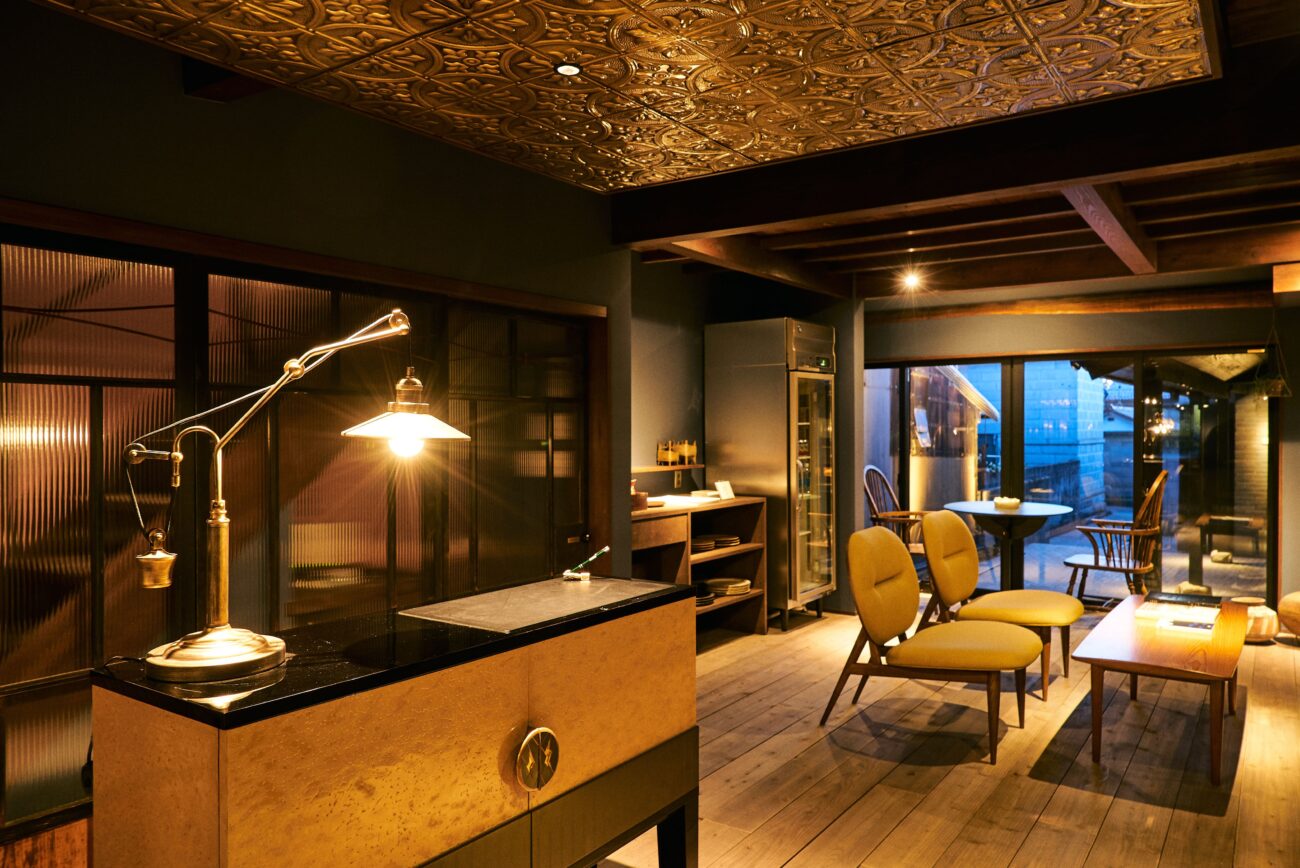
Kai
In other words, people who visit because they are curious about Bed and Craft can realize that the local area is quite attractive too. Like the Echigo Tsumari open-air art festival in Niigata Prefecture or the Setouchi Triennale on islands in the Seto Inland Sea, people visit for the art, but quite a few of them end up also being attracted to the region’s intrinsic strengths. I assume that’s what you want to do in Inami, isn’t it?
But it must be difficult for you not just to manage your inn and your business, but to also pay attention to Inami’s craft legacy and what is going on in the town as a whole.
Yamakawa
Exactly. So for that purpose I have set up Jiso Labo to realize a project involving the community. A friend who owns a local forestry company is the head of the organization and I am a director. Jiso Labo takes care of matters related to community-building, such as finding occupants or new owners for unoccupied dwellings or people to take over existing businesses. The organization recruits people to operate new businesses like the bakery, the craft beer brewery, and a wood sculpting studio. We started this project as an experiment, having businesses occupy empty buildings in Inami, and several new shops have opened.
I believe that community building has a public nature, but I think in our case it’s working because it involves people from the private sector. The craft beer brewery and the bakery started up because of individuals’ strong desire to do that kind of work. No one has been forced to take up a business against their will. As a result, forty-two business have set up shop in empty buildings in the past seven years.
Kai
It’s marvelous. New businesses have taken root thanks to the foundation laid by the local woodcarving craft, giving birth to new enterprises showcasing artisans’ skills and personalities. This has stimulated young people to open up new ventures and created an ideal synergy.
It’s rare to find places like Inami that are so thoroughly permeated with the local culture. This highlights the importance of unearthing the heretofore unrealized value of localities and giving that value concrete form. In a society that prizes uniformity, drawing out the unique traits of a particular locale can only be done by highlighting its culture and customs.
Postscript
Wood carvings may seem old-fashioned at first, but they continue to find new life as they are put to new uses or used to embellish different contexts. Inami’s new story began with creating accommodations appealing to travelers, both domestic and foreign, and its continuing process of trying new things is producing results for all to see.
I believe that preserving local culture will be an essential element, whether for stimulating tourism or encouraging people to settle in the area. To accomplish this, though, perspectives and methods for transforming what was once a mainstay occupation into a culture must be developed. Inami, which has cultivated local assets and made itself attractive to visitors, offers ideas for forging a new path that does not simply rely on nostalgia for bygone days.



